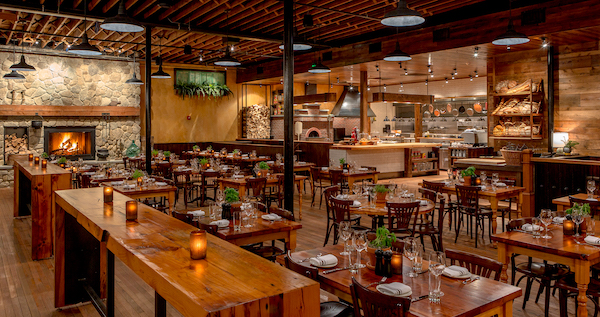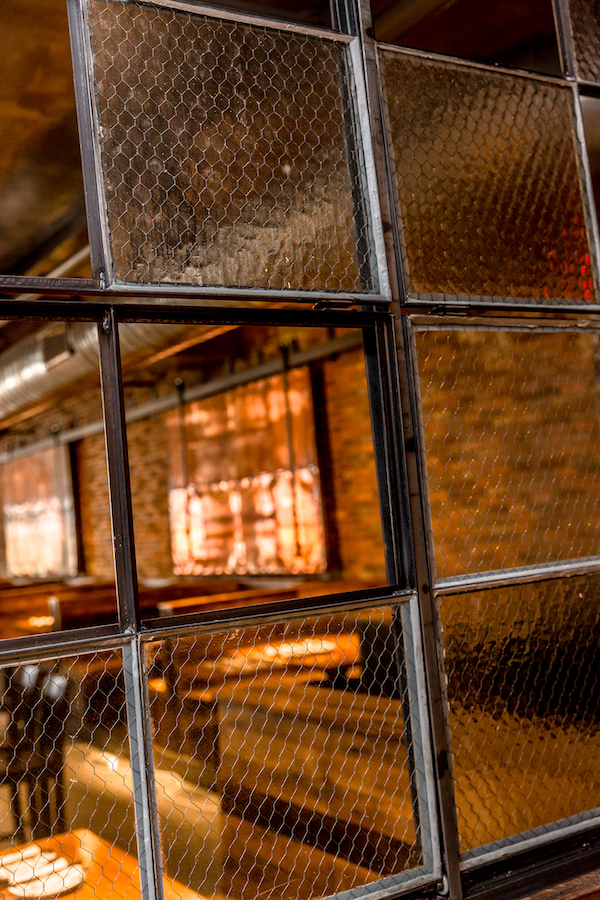How Architectural Salvage Adds Historic Feel to New Restaurants
(Temi J. Sacks, photos courtesy Olde Good Things) As America comes out of its long and painful restaurant hibernation due to the pandemic, more and more restaurants are looking to create more inviting dining spaces. Adding a sustainable and authentic historical element to their space by incorporating architecturally salvaged unique antique pieces is one dramatic way for designers to do this.
The list is intriguing and long: upcycled fixtures ranging from industrial lighting and historic chandeliers, to fireplace mantels and reclaimed wood tables as well as unique items such as chicken wire glass and wine barrels. These add the perfect sustainable transformation to the dining experience, according to Jim DiGiacoma, of Olde Good Things. The architectural salvage company with retail locations in New York, Los Angeles and Scranton, PA as well as a major online presence.
Designer Alsun Keogh of Nusla Designs, created the industrial chic look at Washington, DC’s Nicoletta Italian Kitchen and Brew’d Coffee Bar (seen below). Keogh mixed layers of architecturally salvaged industrial holophane fixtures with steel and glass elements. A partition wall created from raw steel and using large sheets of corrugated chicken wire from old factories separates the bar and the main dining room without closing off either space.

Niccolettas’s makeshift wine display was created from old 1950s office cabinets filled with old legal books, wine bottles and votive candles
“The seating is leather, rich, dark and comfortable, while the tables are made from recycled industrial floors including original screws,” Keogh noted.
“Old French school chairs add a whimsical touch, he added. “Lighting fixtures made from WWI machine gun parts and Edison bulbs continue the industrial chic effect into the bathrooms. And a makeshift wine display was created from old 1950s office cabinets filled with old legal books, wine bottles and votive candles for a charming accent wall.”
Restaurant designer Erica Diskin, Assembly Design Studio, described the process as “a job to create an authentic dining experience that supports the often lofty culinary goals of ownership.”
CAPO repurposed wood tables, chairs and flooring along with upcycled industrial lighting
“The reclaimed pieces we’ve been able to place in our projects are almost always the most talked about design elements in the room,” said Diskin. “Perfectly worn, full of history, and impossible to recreate, Ledger in Salem, MA is probably our best example of purposeful repurposing.
The restaurant was designed in a historic building that once housed one of America’s first banks. From safe doors all the way down to the original security guard’s suit, we made sure to use all the original design that we could,” Diskin added.
Salvage “Finds” can both inspire and fulfill practical restaurant needs. Such successful architectural salvage for Diskin’s work include a pair of gorgeous copper fire doors that were hung on brick and used as decorative sliding video screen covers at The Broadway
In South Boston, Diskin’s team used vintage shoe racks that they refurbished and used as a dramatic bread display at Capo in South Boston. In her words, “and we used an incredible set of vintage classroom doors with original hand painted lettering as bathroom doors at the Bourbon Bowl bowling alley in Greensboro, North Carolina.
“Architectural salvage has been crucial to the feeling of authenticity, reported Restaurateur Seth McClelland. “For example, we added a soft cocoa leather couch, vintage cocktail table, crystal chandelier and industrial metal stools In my prohibition-era speakeasy, The Mirror, Washington, DC.
“And have sourced original tin ceiling tiles for my general store style sandwich shop, The People’s Drug in Alexandria, VA to add authenticity and create a warm ambiance to the dining experience,” added McClelland.
McClelland concluded, “atmosphere rates as tone of the most important thing that causes a customer to return again and again.



 Gerry Furth-Sides
Gerry Furth-Sides  Barbara Hansen
Barbara Hansen  Chef-owner Alain Cohen
Chef-owner Alain Cohen  Roberta Deen
Roberta Deen  Jose Martinez
Jose Martinez  Nivedita Basu
Nivedita Basu